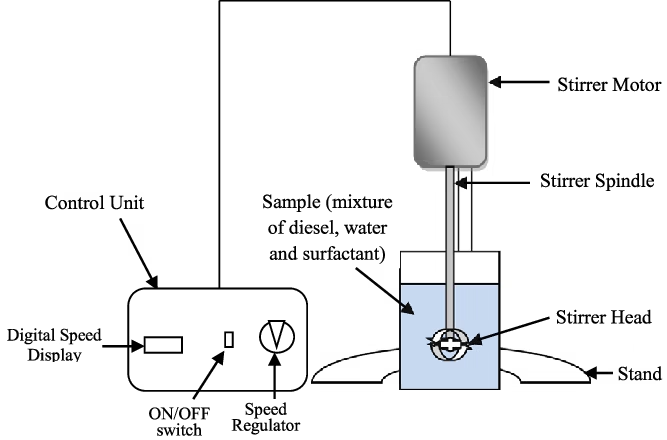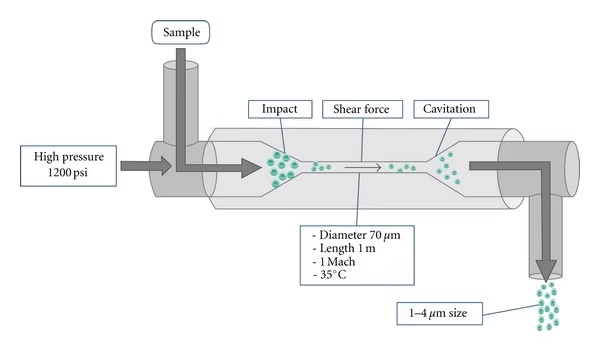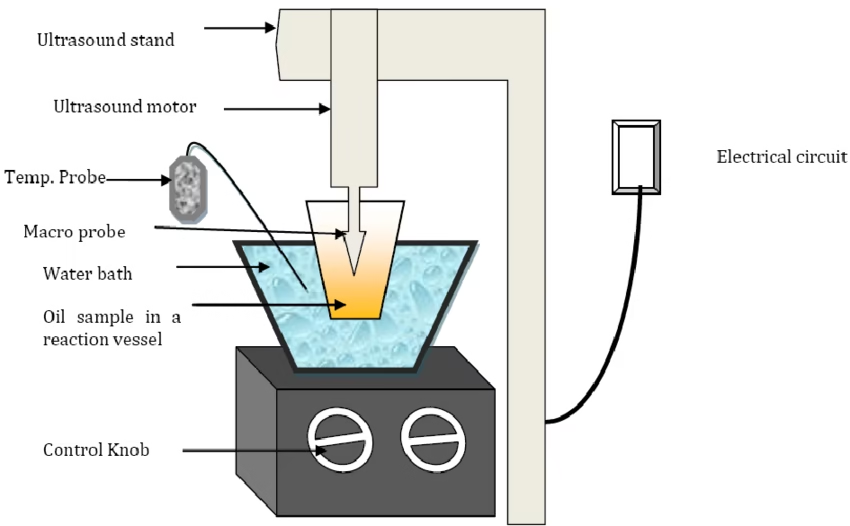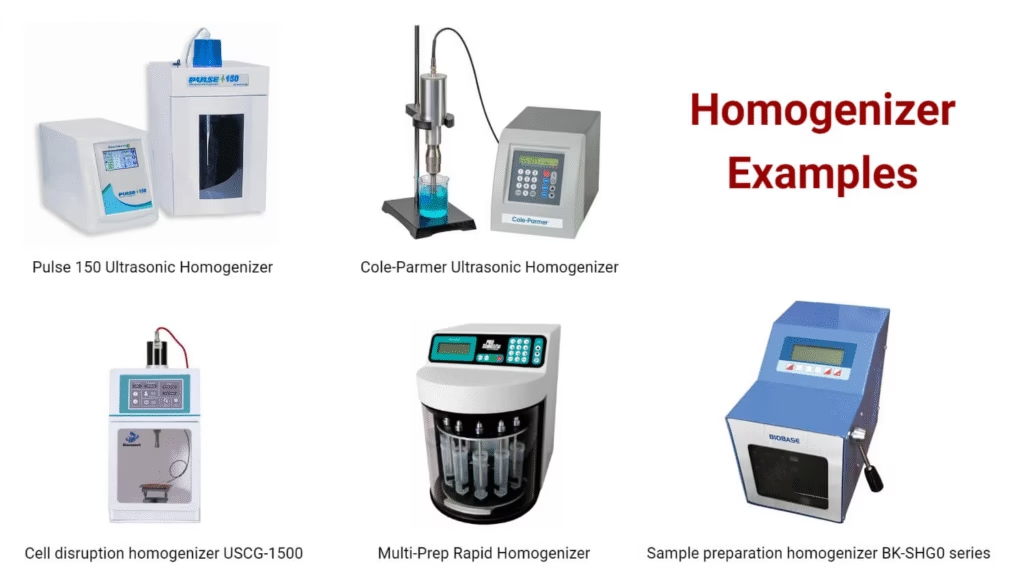Introduction to Homogenizer
A homogenizer is a very important laboratory and industrial instrument used for preparing uniform mixtures and suspensions. The term “homogenize” literally means “to make the same throughout.” In science, technology, and industries, many processes require samples to be broken down, mixed, or dispersed in such a way that every portion of the mixture has the same composition.
For example:
- In the dairy industry, homogenizers are used to evenly disperse milk fat globules so that cream does not separate from milk.
- In biology laboratories, homogenizers help break down cell walls to extract proteins, nucleic acids (DNA, RNA), and enzymes.
- In pharmaceuticals, they are used to prepare drug formulations and vaccines.
The main purpose of a homogenizer is to reduce particle size, break cell structures, kill microbes, and create stable emulsions (mixtures of oil and water-like substances).
Because of these features, homogenizers are widely used in food science, biotechnology, microbiology, pharmaceuticals, cosmetics, and environmental studies.
Principle of Homogenizer
The working of a homogenizer is based on three physical principles:
1. Shearing Action
- When fluids move at different speeds within the machine, layers of liquid slide past each other.
- Large particles trapped between these layers get stretched and torn into smaller particles.
- This shear force is very powerful and is the first step in homogenization.
2. Cavitation
- When fluid passes through a small orifice under very high pressure, bubbles of vapor form due to sudden pressure drop.
- These bubbles collapse violently when pressure increases again, releasing shock waves.
- This intense energy further breaks down particles and cells.
3. Turbulence
- At high speed, fluids flow in a chaotic way, creating eddies (swirls) and random collisions.
- These high-energy movements help in dispersing particles evenly throughout the solution.
Together, shearing, cavitation, and turbulence make homogenizers capable of breaking down even tough biological structures like cell walls and producing very fine, stable emulsions.
Parts of a Homogenizer
A standard laboratory or industrial homogenizer has the following parts:
- Homogenizing Valve –
- The heart of the system.
- Applies pressure and forces the fluid through a very small gap, breaking particles.
- Homogenizing Pump –
- Generates the required pressure.
- Moves the liquid continuously through the system.
- Valve Seat –
- A small adjustable gap that helps in controlling particle size reduction.
- Breaker Ring –
- Creates further turbulence and impact, reducing particle size even more.
- Tension Spring –
- Maintains adjustable pressure on the valve.
- Motor –
- Drives the pump and keeps the system running.
- Sample Chamber / Container –
- Holds the liquid sample to be homogenized.
- Cooling System (in advanced models) –
- Prevents overheating during high-speed operations, especially useful for biological samples.
Operating Procedure of a Homogenizer
Before Starting
- Check that pressure controls are in idle position.
- Turn on cooling water supply to protect pistons from overheating.
Starting the Homogenizer
- Switch on the motor.
- Run water through the system for a few minutes to check performance.
- Drain and check for leaks.
- Supply the sample into the machine using a 3-way valve.
- Adjust first-stage and second-stage valve pressures.
- Increase flow until the required pressure is achieved.
- Open the bypass valve to allow the product into the system.
Shutting Down
- Divert flow when run is completed.
- Flush system with clean water to remove residues.
- Release valve pressures.
- Switch to cleaning mode, then turn off the machine.
Following this step-by-step procedure ensures both operator safety and long life of the machine.
Types of Homogenizers
Homogenizers can be broadly classified into the following categories:
1. Mechanical Homogenizers
- Work on rotating mechanical parts like blades, paddles, or cones.
- Use physical shearing to reduce particle size.
Examples:
- Colloid Mill – Works on rotor-stator principle; creates suspensions and emulsions.
- Rotor-Stator Homogenizer – High-speed rotor creates shear, useful for mixing emulsions.
- Bead Mill Homogenizer – Uses beads to grind and disrupt small particles or microbial cells.
- Blade Homogenizer – High-speed blades generate shear to break samples.

2. High-Pressure Homogenizers
- Use piston pumps to apply very high pressure (up to 1,500 bar).
- Fluids are forced through tiny openings, breaking particles into nanoscale.
- Most widely used in food industry (milk homogenization).

3. Ultrasonic Homogenizers (Sonicators)
- Use ultrasonic sound waves to create cavitation.
- Alternating compression and rarefaction cycles break particles.
- Ideal for cell lysis, DNA shearing, nanoemulsions, and dispersions.

4. Manual / Handheld Homogenizers
- Simple devices for small-scale lab use.
- Useful in field biology and teaching labs.
Applications of Homogenizers
Homogenizers are versatile and used in multiple fields:
1. Food & Dairy Industry
- Milk, cream, yogurt, ice cream – prevent fat separation and improve texture.
- Sauces and dressings – create stable emulsions.
- Beverages – enhance flavor and shelf life.
2. Biotechnology & Life Sciences
- Breaking cell walls to release proteins, nucleic acids.
- Preparation of cell-free extracts.
- Homogenization of tissues for enzyme studies.
3. Pharmaceutical Industry
- Drug formulation and nanoparticle production.
- Vaccine preparation.
- Improving bioavailability of medicines.
4. Cosmetics & Personal Care
- Creams, lotions, shampoos, sunscreens – smooth and stable products.
5. Environmental Studies
- Processing soil, water, and sludge samples.
- Homogenizing microbial cultures for pollution testing.
6. Clinical & Medical Labs
- Blood and tissue homogenization.
- Enzyme extraction for diagnostic tests.
Advantages of Homogenizers
- Produces uniform and stable mixtures.
- Improves texture, taste, and shelf life of food products.
- Enhances extraction efficiency of biomolecules.
- Can inactivate microbes without heating.
- Available in both lab-scale and industrial-scale models.
Limitations of Homogenizers
- Not energy efficient (heat is generated during operation).
- May increase microbial contamination risk due to larger exposed surface area.
- Cannot handle large solids effectively.
- Expensive equipment, high maintenance cost.
- Some models require skilled operators.
Precautions While Using Homogenizers
- Increase pressure gradually to avoid accidents.
- Never run the machine dry.
- Clean and reinstall strainers regularly.
- Always release valve pressure before restarting.
- Do not close 3-way valve during operation.
Examples of Modern Homogenizers
- Ultrasonic Homogenizer Pulse 150 – For DNA shearing and chromatin studies.
- Rotary Homogenizer EW-04711 (Cole-Parmer) – Comes with temperature control.
- Cell Disruption Homogenizer USCG-1500 (Bioevopeak) – Equipped with safety alarms.
- Multi-Prep Rotary Homogenizer (PRO Scientific) – Can process multiple samples at once.
- BK-SHG0 Sample Preparation Homogenizer (Biobase) – Used for sterile sample preparation.

FAQs on Homogenizers
Q1. Who invented homogenizers?
Ans: Auguste Gaulin, originally for milk homogenization.
Q2. What principle does a homogenizer work on?
Ans: Combination of shearing, cavitation, and turbulence.
Q3. Which industries use homogenizers most?
Ans: Food, pharmaceuticals, biotechnology, and cosmetics.
Q4. What is the difference between high-pressure and ultrasonic homogenizers?
Ans: High-pressure uses piston pumps, ultrasonic uses sound waves and cavitation.
Q5. Can homogenizers extract biomolecules?
Ans: Yes, they are widely used for DNA, RNA, protein, and enzyme extractions.
Conclusion
The homogenizer is one of the most versatile and essential tools in both scientific research and industries. From milk homogenization to DNA extraction, homogenizers ensure that solutions are uniform, stable, and reliable.
Working on the principles of shearing, cavitation, and turbulence, they play a crucial role in biotechnology, food science, pharmaceuticals, cosmetics, and environmental monitoring.
Although they have limitations such as energy use and cost, their benefits in improving product quality, stability, and efficiency far outweigh the drawbacks.
In short: Homogenizers are the foundation of modern laboratories and industries where uniformity and stability are essential.
References
- https://ouat.nic.in/sites/default/files/7-homogenisation_of_milk_dairy_and_food_engineering.pdf
- https://microbeonline.com/homogenizer-parts-types-and-function/
- http://ecoursesonline.iasri.res.in/mod/page/view.php?id=6146
- https://microbenotes.com/homogenizer-principle-procedure-parts-types-uses-examples/
- https://www.medicalexpo.com/prod/cole-parmer/product-98375-663584.html
- https://www.medicalexpo.com/prod/pro-scientific-inc/product-100430-662692.html
- Mondal, P. K., & Mandal, B. K. (2019, November). A comparative study on the performance and emissions from a CI engine fuelled with water emulsified diesel prepared by mechanical homogenization and ultrasonic dispersion method. Energy Reports, 5, 639–648. https://doi.org/10.1016/j.egyr.2019.05.006
- Cho, S. C., Choi, W. Y., Oh, S. H., Lee, C. G., Seo, Y. C., Kim, J. S., Song, C. H., Kim, G. V., Lee, S. Y., Kang, D. H., & Lee, H. Y. (2012). Enhancement of Lipid Extraction from Marine Microalga,ScenedesmusAssociated with High-Pressure Homogenization Process. Journal of Biomedicine and Biotechnology, 2012, 1–6. https://doi.org/10.1155/2012/359432
- Babajide, O., Petrik, L., Amigun, B., & Ameer, F. (2010). Low-Cost Feedstock Conversion to Biodiesel via Ultrasound Technology. Energies, 3(10), 1691–1703. https://doi.org/10.3390/en3101691
Other related topics you might be interested in:
Autoclave – Principle, Parts, Procedure, Types, Uses, Advantages, Limitations
Bioreactor – Principle, Design, Parts, Types, Applications, and Limitations
Bunsen Burner – Principle, Parts, Types, Flames, Applications, Advantages & Precautions
Centrifuge – Principle, Parts, Types, Operation, Applications and Advantages
Colony Counter – Definition, Principle, Types, Parts, Working, Applications, Advantages & Examples
Hot Air Oven – Principle, Parts, Types, Working, Applications & Advantages
Instruments Used in Microbiology Laboratory – Principles, Uses, and Applications
Laboratory Incubator – Principle, Types, Components, Working, Applications, Advantages & Limitations
Laminar Flow Hood / Cabinet – Principle, Types, Parts, Procedure, Applications & Precautions
Micropipette – Definition, Types, Parts, Working, Applications, Errors, Calibration & Limitations
pH Meter – Principle, Parts, Working, Procedure, Types, Applications, Advantages & Precautions
Pipettes – Principle, Types, Uses, Parts, Operation, Advantages & Precautions
Ultracentrifuge – Principle, Types, Parts, Working Procedure, Applications, Advantages & Precautions
Vortex Mixer – Definition, Principle, Parts, Types, Working, Applications, Advantages & Precautions
